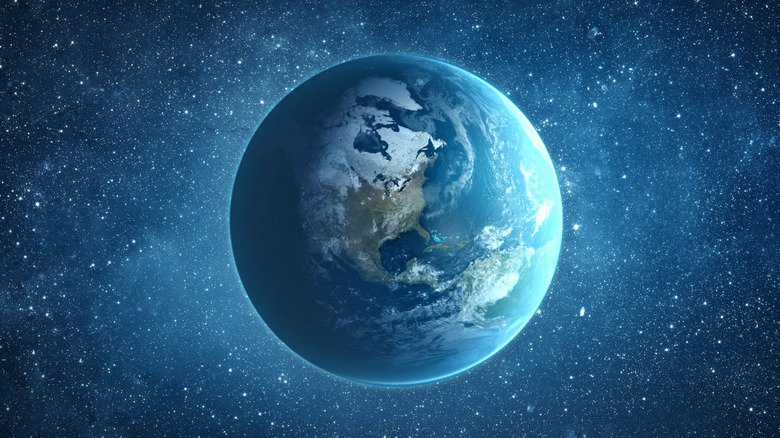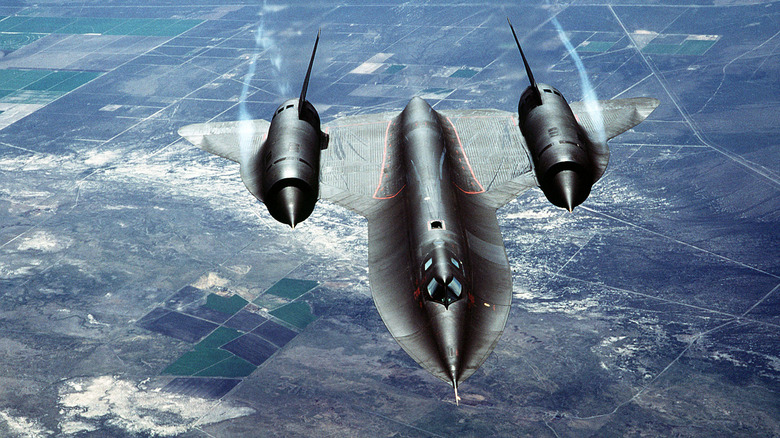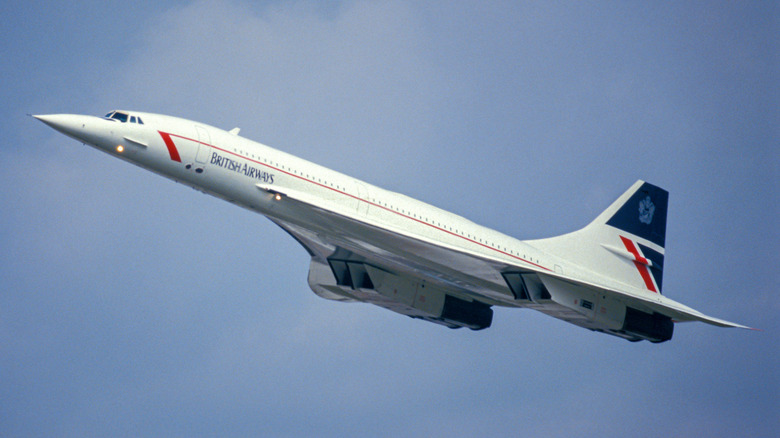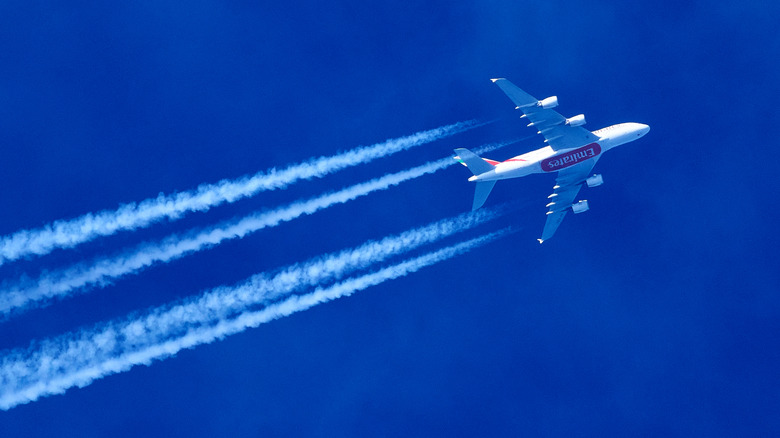Is It Possible For A Plane To Outrun Earth's Rotation?
On certain trans-Pacific flights, you can "time travel" by crossing the International Date Line. For example, if you want to go from San Francisco to Tokyo, and your flight departs at 5:00 p.m. on Thursday, you'll arrive in Japan around 8:00 p.m. on Friday. That's 27 hours after you departed, despite the flight only lasting 11 hours. It's even stranger going in the opposite direction, where you could celebrate New Year's twice by departing Tokyo in the early hours of January 1 and arriving in San Francisco on the evening of December 31st. Of course, this isn't real time travel, as it's merely the product of the human construct of dates, but if a plane were fast enough, it could theoretically make outrunning the Earth possible.
Going back in time is impossible (unless this guy has it figured out), but traveling into the future is a slightly different story. One of the central facets of Einstein's theory of space-time is that time progresses relative to the speed at which the observer moves. Time passes more slowly the faster you travel, so if you could fly around the Earth at the speed of light for just one month, you would return home to find that everyone you know is a full 40 years older. Unfortunately, we don't have lightspeed technology to take us to the future, but if you just flew at a speed equal to Earth's rotation, you could potentially "freeze" time, remaining eternally in sunlight or darkness. Here's what it would take to accomplish that.
Flying at the speed of Earth
If you wanted to make a day last forever, you could do so by flying at the same pace that the sun's light crosses the face of the Earth, ensuring continuous sunlight. If you could eclipse that pace and outrun the planet's rotation, you could even get through a day in under 24 hours. But in order to achieve such goals, you first need to figure out how fast you need to go.
The circumference of Earth's equator is 24,901 miles and the planet completes one full rotation every 24 hours. That means the Earth rotates at approximately 1,037 miles per hour. That is significantly faster than the speed of sound, which is "only" around 761 mph, so traveling around the world fast enough to manipulate time certainly wouldn't be an easy feat.
Unfortunately for hopeful plane passengers, commercial aircraft do not come close to the speeds required to beat the planet's rotation. The average pace of a commercial jet at cruising speed is between 550 and 600 mph, barely half the speed it would take to match or outpace the course of a day. To actually outrun the Earth, you would need a supersonic aircraft, and there are only a few planes in existence that can achieve this.
Planes that can beat the speed of Earth's rotation
The first plane to ever reach the speed of Earth's rotation was a British aircraft built in 1956 called the Fairey Delta 2, which reached a top speed of 1,132 mph. However, only two of these planes were ever built, and they never achieved widespread use. Progress on supersonic aircraft escalated rapidly after this, and within a decade, planes were reaching speeds that made the Fairey Delta 2 look downright sluggish.
The fastest airplane ever made was the Lockheed SR-71 Blackbird, built at the height of the Cold War in an effort to create an aircraft so fast that enemies could not possibly shoot it down. This presented a significant challenge, because the faster a plane flies, the more friction it creates against the surrounding air. A jet travelling at 2,000 mph would heat the air around it to over 1,000 degrees Fahrenheit, so the SR-71 had to be built from titanium. It earned its "Blackbird" name from the black paint it used to help absorb and emit heat.
The SR-71 Blackbird was first tested in 1964, and went into military service in 1966. On one particular flight in 1976, an SR-71 reached 2,193.167 mph, which remains to this day the fastest speed ever recorded by a manned plane (although it's not close to the fastest made-made object overall). If the Blackbird were able to maintain that speed for a non-stop trip around the world, it would finish the trip in fewer than 12 hours. We'll never see how fast it could make the journey though, because the U.S. military decommissioned its SR-71 fleet in 1990 amidst budget cuts, but it remains an aviation icon.
The commercial jet that could outrun the Earth
Supersonic aircraft exist almost exclusively for military use, but there was one iconic exception: the Concorde. Designed in cooperation between France's Aérospatiale and the British Aircraft Corporation, the Concorde was the world's first supersonic commercial passenger plane. It debuted in 1976, under both Air France and British Airways, which used the planes primarily for trans-Atlantic flights between Europe and the Americas. The Concorde's average cruising speed was 1,345 mph, nearly twice the speed of sound, and over 300 mph faster than Earth's rotation.
The Concorde was so fast that it could indeed manipulate time from the perspective of its passengers. The most famous example of this occurred on June 30, 1973, when the original Concorde 001 flew along the path of totality of a solar eclipse. Carrying a special passenger group of scientists, the plane followed the moon's shadow over North Africa for more than an hour. While observers on the ground witnessed the eclipse for seven minutes at most, the passengers on the Concorde witnessed it for a stunning 74 minutes, essentially slowing the passage of time from their perception. However, the moon's shadow eventually overtook the plane.
As fast as the Concorde was, the fun couldn't last forever. The planes were incredibly expensive and only available for the wealthiest passengers. They also consumed far more fuel and generated far more greenhouse gas emissions than standard commercial planes. The Concorde was officially retired in 2003.
Why even the fastest planes can't travel through time (yet)
The Concorde could travel twice the speed of sound, so you might think it could outrun the Earth's rotation with ease. That wasn't the case because there are more factors impacting such a journey than speed alone. The most prominent issue is that no plane can make it all the way around the world without refueling, which cuts into travel time significantly, even if the fuel is delivered in-flight by another plane. There are also laws in place that restrict how fast a plane can travel over land. The sonic booms generated by supersonic aircraft can echo for miles, causing a serious disturbance to the people and nature on the ground below.
The Concorde did set a record for the fastest circumnavigation of Earth, but it wasn't quite fast enough to beat the speed of the planet's rotation. In 1995, a Concorde jet flew eastward around the world, starting and ending in New York City. Due to a combination of the limits mentioned above, the flight took a total of 31 hours and 27 minutes. This is as close to beating the speed of Earth's rotation that we've gotten, but the future may hold more exciting possibilities. Multiple companies are working towards a revival of supersonic commercial flights, with planes that are able to eclipse the speed of sound without a sonic boom. This could pave the way for new record-setting flights, perhaps even one that can circumnavigate the globe in under 24 hours.




